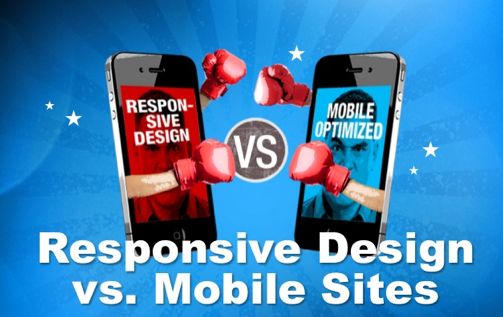Responsive Web Design VS Mobile Version
It has been over a year now since "Mobilegeddon" happened at Google. For those not familiar, Mobilegeddon was the event in which Google announced that going forward, you will be punished if your website is not mobile-friendly, in the way that websites are ranked and indexed.
There are two ways to be considered "mobile-friendly" and be compliant with Google's requirements:
- Have a separate mobile version of your website where the layout and content is optimized to fit on mobile devices.
- Responsive Web Design (RWD) which is where you do not have a separate website for mobile but instead, the layout and content "responds" to the device you are viewing it on and adapts to your device automatically and displays the content in a way that is optimized for ALL devices.
This article intends to show the pros and cons in the two strategies above. The article, while will contain facts, is a bit biased in that we always design/develop all websites using the responsive web design technology, unless the project we're developing is a web app that is specifically meant for desktop use only.
First, we will show the pros and cons of having a separate mobile version, since it was introduced before responsive web design came along...
Pros of Mobile Versions:
- Can be customized specifically for mobile users
- Should be the most mobile--friendly version of a website
- Typically a little cheaper to design
Cons of Mobile Versions:
- Recurring maintenance separate from the main website
- Higher costs for updating content
- Potential for errors and inconsistencies due to replicating content
- Probable to have to be refactored to meet future browsers/devices
Next we will demonstrate the pros and cons of using responsive web design (RWD):
Pros of using RWD:
- Can be customized specifically for tablet/mobile users, through code that recognize the device/browser and serve content based on detection
- Highly flexible - a single responsive website works on all devices so only one site has to be created and maintained
- RWD is Google's recommended configuration
- More cost efficient and higher ROI as most responsive websites will not need as much maintenance for comply with future browser/device changes
- Responsive web design's popularity has created many frameworks such as Twitter's Bootstrap, Foundation by Zurb and many others, that make the cost of designing and developing responsive websites much more cost effective than when RWD first came on the scene
Cons of using RWD:
- Can a bit more expensive in upfront implementation costs, depending on size of site and amount of content
So there you have it - the pro's and con's for both mobile-versions and responsive web design. Whichever you determine is the best approach for your organization, it is critical that you make sure that your website is mobile-friendly.
For a quick check on Google's mobile-friendly test console, go here: https://search.google.com/search-console/mobile-friendly



Leave a comment